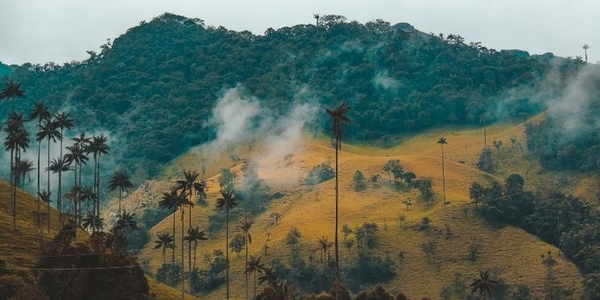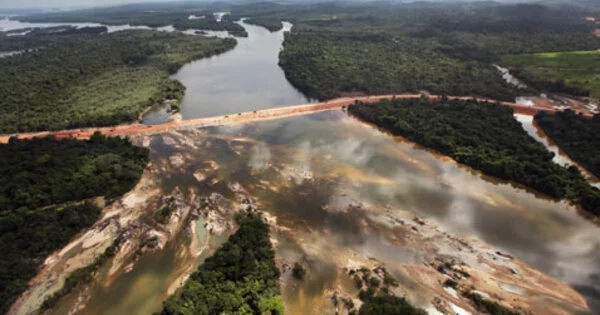A major study of landscape changes in the Brazilian Amazon sheds new light on the biome’s many environmental threats, but it also offers encouraging prospects for ecological sustainability in the world’s most biodiverse tropical forest.
The study’s findings are critical because, as the Amazon approaches a “tipping point,” they provide a solid evidence base to inform urgently needed conservation and forest regeneration priorities. They demonstrate that gains can be made through a variety of actions, including, but not limited to, halting deforestation.
The research, which is published today in the scientific journal Proceedings of the National Academy of Sciences (PNAS), was conducted by an international team of scientists from Brazil and the UK. They examined the ecological impacts caused by changes people are making to forest landscapes in two regions of the Brazilian State of Pará — Santarém and Paragominas.
“While the focus has been on deforestation to date, we now know that tropical forest landscapes are being altered by a much broader range of human activities,” said lead researcher Dr. Cássio Alencar Nunes of Universidade Federal de Lavras in Brazil and Lancaster University in the United Kingdom. “Deforestation and degradation of primary forest, for example, through selective logging and fires, are among these changes, but even deforested landscapes are changing as agricultural abandonment leads to secondary forest regrowth. As a result, many tropical landscapes now consist of a mix of non-forest land uses, regenerating secondary forests, and degraded primary forests.”
According to our findings, transitions from primary forests to pasture are always classified as ‘high impact, high rate’ in terms of biodiversity, carbon storage, and soil properties. This highlights the critical and urgent importance of combating deforestation, which has been on the rise in recent years.
Dr. Alencar Nunes
By investigating the rate of transformation between different land uses and their impacts on the ecological condition, the researchers identified the transitions that are common and have high ecological impacts, as well as those that have large impacts but occur less frequently.
“Our findings provide a richer understanding of how humans affect the Amazon and its ecosystem,” said Dr. Alencar Nunes. The researchers studied how changes affect biodiversity by collecting data from 310 plots and examining over 2,000 species of trees, lianas, birds, and insects. They also looked at soil and carbon properties.
The researchers also used publicly available data from 2006 to 2019 to determine how quickly the landscape has changed over the last decade.
Their results show that transitions from primary and secondary forests to pasture through deforestation amounted to 24,000 km² a year. They found that species richness of almost all biodiversity groups declined by between 18 and 100 per cent across plots where primary or secondary forest had been converted to pasture or mechanized agriculture. Transitions from forest to mechanized agriculture had the most ecological impact but occurred less frequently than conversion of forests to pasture.

“The most damaging land-use change in the Brazilian Amazon is deforestation of primary forests to create pasture,” said Dr. Alencar Nunes. “According to our findings, transitions from primary forests to pasture are always classified as ‘high impact, high rate’ in terms of biodiversity, carbon storage, and soil properties. This highlights the critical and urgent importance of combating deforestation, which has been on the rise in recent years.”
The study did, however, reveal opportunities for positive action, such as emphasizing the importance of protecting secondary forests and allowing them to mature. They discovered that as young secondary forests aged beyond 20 years, the diversity of large trees doubled and small tree diversity increased by 55%, resulting in increased biodiversity and carbon storage.
Other findings revealed less visible forms of degradation affecting the Amazon’s ecology. They discovered that switching from cattle pasture to more intensive mechanized agriculture reduces biodiversity, with the diversity of ants and birds decreasing by 30% and 59%, respectively.
Dr Alencar Nunes said: “These are important findings as they show that there are a multitude of actions that can be taken to protect and improve the ecology of the Amazon. When farmers switch land from pasture to growing crops using mechanized agricultural methods, that is also impacting on biodiversity, but it is a process that is largely hidden when compared to deforestation.
“We can achieve significant ecological restoration gains in the Amazon by reducing the amount of land converted to mechanical farming and allowing secondary forests to regrow. Our research assists in defining and prioritizing the local and regional actions needed to stimulate a better Amazonia.”
Co-author Jos Barlow, Professor of Conservation Science at Lancaster University’s Lancaster Environment Centre, stated that the study has implications for conservation and policy.
He stated: “Our findings highlight the importance of combating deforestation, as well as the additional benefits of avoiding degradation and increasing the longevity of secondary forests. To accomplish this, however, the current management of the Amazon must be transformed, including much better integration of science, policy, and local practices.”
“We also emphasize the importance of focusing on biodiversity as well as carbon in tropical forests, as biodiversity was the most affected by all of the land-use changes studied. We hope that biodiversity will be included in climate change mitigation actions and that this will be emphasized at the upcoming Biodiversity COP15.”





